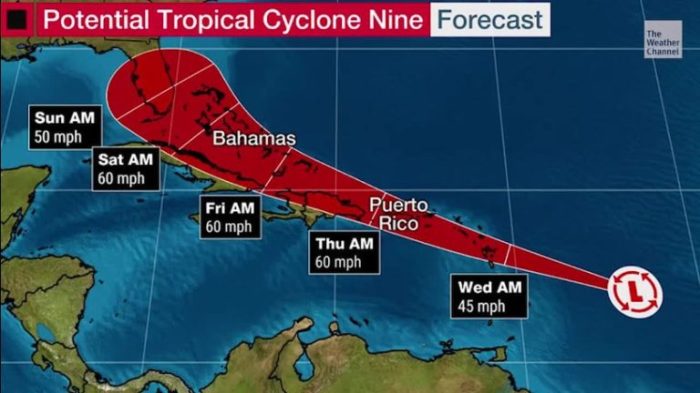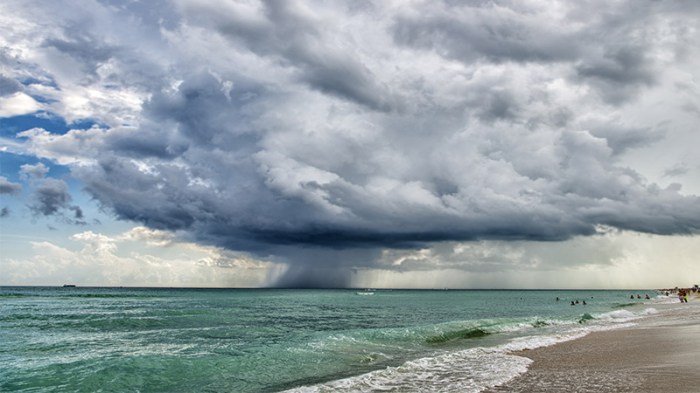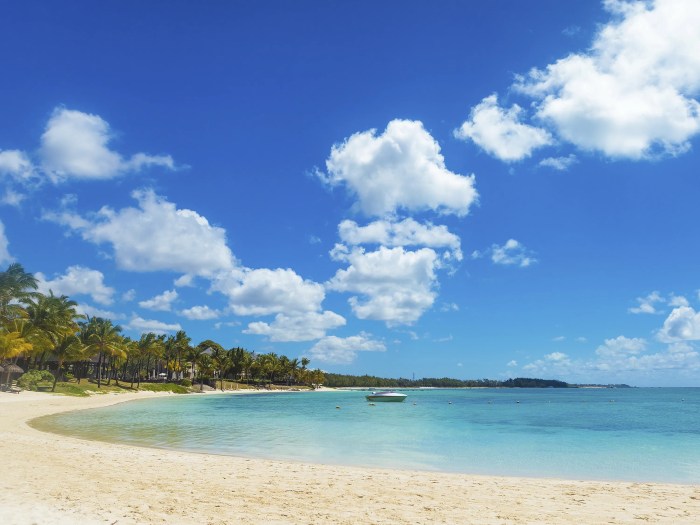Embark on a meteorological journey through the Bahamas, a captivating archipelago where turquoise waters meet vibrant skies. From its idyllic year-round warmth to the occasional tropical storm, the Bahamas weather paints a diverse and ever-changing canvas that shapes the islands’ unique character.
Throughout the year, the Bahamas bask in a subtropical climate, offering a blissful respite from the harsh winters of the north. Temperatures hover around a comfortable 80 degrees Fahrenheit, with gentle trade winds providing a refreshing breeze. The seasons transition seamlessly, with a dry season spanning from November to April and a wet season from May to October.
Overview of the Bahamas Weather
The Bahamas, an archipelago nation in the Caribbean, experiences a tropical climate characterized by warm temperatures, abundant sunshine, and moderate humidity throughout the year. The weather patterns in the Bahamas are influenced by its proximity to the Tropic of Cancer and the warm waters of the Atlantic Ocean.
The Bahamas has two distinct seasons: a wet season and a dry season. The wet season typically runs from May to October, during which the islands receive the majority of their annual rainfall. The dry season, on the other hand, spans from November to April and is characterized by drier conditions and less frequent rainfall.
Average Temperatures
The average temperature in the Bahamas remains relatively constant throughout the year, with average daily temperatures ranging from 24°C (75°F) in the cooler months to 32°C (90°F) in the warmer months. The nights are generally cooler, with average nighttime temperatures ranging from 18°C (64°F) to 24°C (75°F).
Humidity
Humidity levels in the Bahamas are typically moderate, ranging from 60% to 80% throughout the year. The higher humidity levels are usually experienced during the wet season, while the drier season tends to have lower humidity.
The Bahamas offers a tropical paradise with warm, sunny weather year-round, making it an ideal destination for families seeking a memorable vacation. If you’re planning a trip with your loved ones, consider exploring the family-friendly resorts in the Bahamas. These resorts cater to the needs of children and adults alike, providing amenities such as kids’ clubs, splash parks, and supervised activities.
While enjoying the beautiful weather and amenities, don’t forget to pack sunscreen and stay hydrated to make the most of your time in the Bahamas.
Precipitation
The Bahamas receives an average annual rainfall of around 1,200 millimeters (47 inches). The majority of the rainfall occurs during the wet season, with the months of June to October being the wettest. The dry season, on the other hand, is characterized by less frequent and lighter rainfall.
Weather Patterns and Systems

The Bahamas’ weather is primarily influenced by its location within the subtropics and its proximity to the Atlantic Ocean. Several major weather patterns affect the islands, including the North Atlantic subtropical high-pressure system, the trade winds, and tropical cyclones.
The North Atlantic subtropical high-pressure system is a semi-permanent high-pressure system that dominates the weather in the North Atlantic Ocean. This system steers the trade winds, which are the prevailing winds in the Bahamas. The trade winds bring warm, moist air from the east and help to moderate the islands’ temperatures.
Tropical cyclones, which include hurricanes and tropical storms, are the most significant weather systems that affect the Bahamas. These systems form over the warm waters of the Atlantic Ocean and can bring strong winds, heavy rain, and storm surges to the islands.
Specific Weather Systems that have Impacted the Bahamas
The Bahamas has been impacted by numerous tropical cyclones throughout its history. Some of the most notable include:
- Hurricane Dorian (2019): A Category 5 hurricane that caused widespread damage and flooding in the Abaco Islands and Grand Bahama.
- Hurricane Matthew (2016): A Category 4 hurricane that caused significant damage to the southeastern Bahamas.
- Hurricane Joaquin (2015): A Category 4 hurricane that caused flooding and damage in the central Bahamas.
Hurricanes and Tropical Storms
The Bahamas, located in the Atlantic Ocean, is prone to hurricanes and tropical storms, particularly during the Atlantic hurricane season, which runs from June 1st to November 30th. Hurricanes are powerful rotating storms that form over warm ocean waters and bring high winds, heavy rainfall, and storm surges.
The Bahamas, with its idyllic weather and pristine beaches, offers a perfect escape. But if you’re looking for a unique adventure, consider venturing to the Alabama Hills. This rugged landscape, known for its towering rock formations and otherworldly beauty, provides a stark contrast to the tranquil shores of the Bahamas.
Despite the geographical distance, the Bahamas’ weather can still influence the Alabama Hills, as storms and hurricanes can bring heavy rainfall and even snow to the region. However, the unique topography of the Alabama Hills creates its own microclimate, ensuring that visitors can enjoy stunning views and breathtaking hikes year-round.
The intensity of hurricanes is measured using the Saffir-Simpson Hurricane Wind Scale, which categorizes hurricanes from 1 to 5 based on their maximum sustained wind speeds. Category 1 hurricanes have wind speeds of 74-95 mph, while Category 5 hurricanes have wind speeds of 157 mph or higher.
Staying Safe During Hurricane Season
During hurricane season, it is important to be prepared and take precautions to stay safe. Here are some tips:
- Monitor weather forecasts and advisories from the Bahamas Department of Meteorology.
- Have an evacuation plan in place and know where you will go if you need to evacuate.
- Secure your home and property by boarding up windows and doors, and bringing in outdoor furniture and loose items.
- Stock up on essential supplies such as food, water, first-aid kits, and batteries.
- Stay informed and follow instructions from local authorities.
Climate Change and the Bahamas: Bahamas Weather

The Bahamas is particularly vulnerable to the effects of climate change, as rising sea levels and changing weather patterns pose significant threats to the islands. These changes have the potential to impact infrastructure, tourism, and the livelihoods of the Bahamian people.
The Bahamas weather, with its warm temperatures and crystal-clear waters, is a haven for tourists seeking relaxation and adventure. For those looking for a change of scenery, the vibrant city of Almeria in Spain offers a captivating blend of history, culture, and stunning landscapes.
However, the Bahamas remains an idyllic destination with its year-round sunshine, pristine beaches, and vibrant coral reefs, beckoning visitors to return for a taste of paradise.
Sea Level Rise
One of the most significant impacts of climate change on the Bahamas is rising sea levels. As the global temperature increases, the ocean expands and glaciers melt, leading to a rise in sea levels. This poses a threat to low-lying coastal areas, which are at risk of flooding and erosion. In the Bahamas, many of the islands are low-lying, and even a small rise in sea level could have a devastating impact.
Changing Weather Patterns
Climate change is also leading to changes in weather patterns, including more frequent and intense hurricanes and tropical storms. These storms can cause widespread damage to infrastructure, homes, and businesses. In addition, changing weather patterns can also lead to droughts, which can impact agriculture and water resources.
Adaptation and Mitigation Strategies, Bahamas weather
The Bahamas is taking steps to adapt to the impacts of climate change and mitigate its effects. These strategies include:
- Building seawalls and other coastal defenses to protect against flooding
- Relocating communities away from vulnerable coastal areas
- Investing in renewable energy sources to reduce greenhouse gas emissions
- Promoting sustainable tourism practices to reduce the impact on the environment
Weather Forecasting and Resources

The Bahamas Meteorological Department (BMD) is the official source for weather forecasts and advisories in the Bahamas. The BMD provides a variety of services, including:
- Daily weather forecasts
- Severe weather warnings
- Tropical cyclone forecasts
- Climate information
To access weather forecasts and advisories from the BMD, you can visit their website or download their mobile app. There are also a number of reputable websites and mobile apps that provide weather information for the Bahamas, including:
- The Weather Channel
- AccuWeather
- Weather Underground
Conclusive Thoughts

As the sun dips below the horizon, casting a golden glow across the islands, the Bahamas weather leaves an unforgettable impression. Whether you seek tranquility under azure skies or the exhilaration of a tropical storm, this captivating destination offers a mesmerizing blend of weather patterns that will forever etch itself in your memory.
Common Queries
What is the best time to visit the Bahamas?
The ideal time to visit the Bahamas is during the dry season, from November to April, when the weather is at its most stable and rainfall is minimal.
Are hurricanes common in the Bahamas?
The Bahamas lies within the Atlantic hurricane belt, and while hurricanes can occur, they are relatively infrequent. The islands have a well-established hurricane warning system in place to ensure the safety of residents and visitors.
How does climate change affect the Bahamas?
Climate change poses significant challenges to the Bahamas, including rising sea levels, increased storm intensity, and changes in precipitation patterns. The government and local communities are implementing adaptation and mitigation strategies to address these challenges.